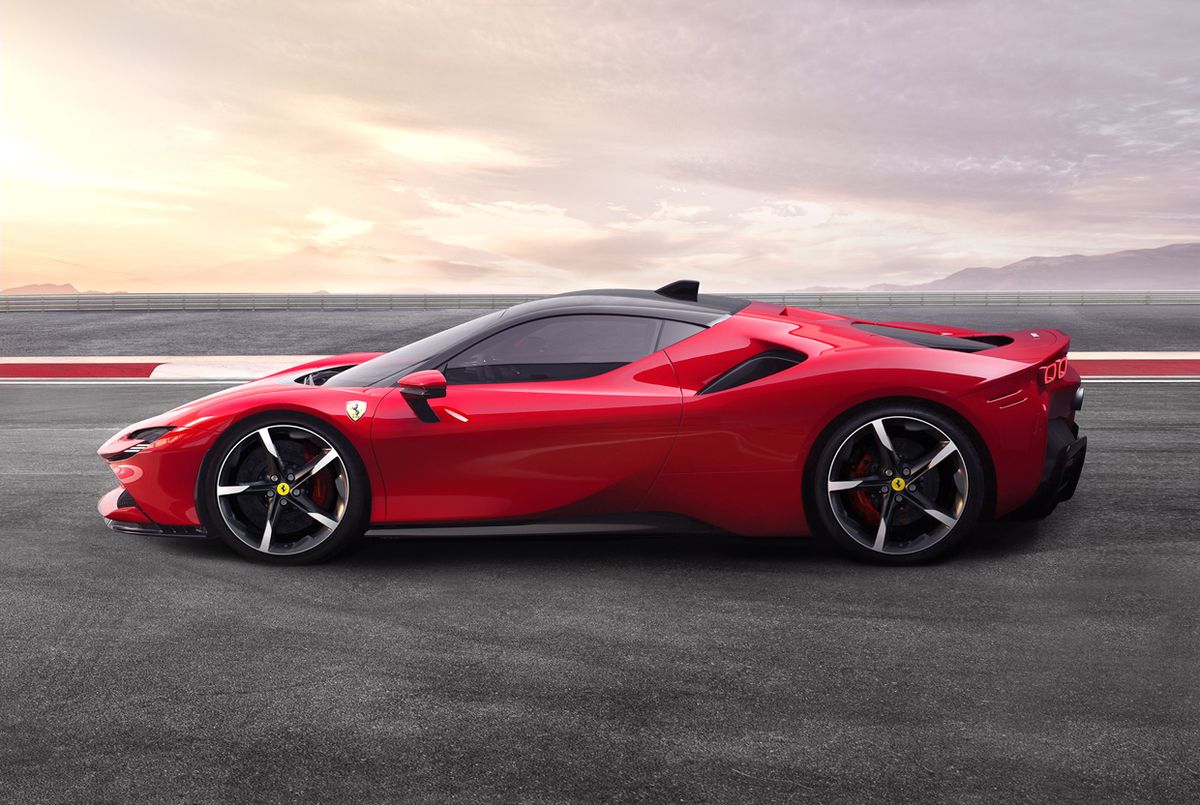2021’s Top Ten Tech Cars: Ferrari SF90 Stradale
The fastest of its breed, and batteries are included

The late Enzo Ferrari would have been flabbergasted to learn that the fastest road-going car in Ferrari history would have a plug. “Dai!," he might have said.
That cord connection lets the SF90 Stradale and SF90 Spider convertible—the company's first plug-in hybrids—cruise for 25 kilometers (15.5miles) on electricity alone, perhaps for a commute through smoggy Rome, where diesel cars have already been banned during pollution emergencies. This voluptuous mid-engine Ferrari also shuts down its twin-turbo, 769-horsepower V-8 whenever it's in reverse. Let's face it: If you need the turbo when you're in reverse, you need to reevaluate some of your life choices.
With its 735-kilowatt (986-horsepower) punch of gasoline and electricity, the Stradale gets from 0 to 100 kilometers per hour (62 miles per hour) in 2.5 seconds, and sets a record 79-second lap around the fabled Fiorano circuit in Maranello, Italy, where the company is headquartered. Making all that possible is a trio of electric motors, including one for each front wheel, for precise control of all-wheel-drive traction and a combined power boost of 161-kW (217 hp). The third motor is sandwiched between the engine and a spectacular dual-clutch, eight-speed automated gearbox derived from Ferrari's Formula 1 cars. All of the motors get nourishment from a 6.5 kilowatt-hour lithium-ion battery.
Base price:
US $511,250
Ferrari's steering-wheel manettino (Italian for “little switch") summons any one of four driving modes, from an eDrive setting with exclusively front-wheel power and zero tailpipe emissions, to a new Qualify setting that releases the Kraken.
A brake-by-wire unit blends regenerative energy capture with hydraulic force administered through the physical pedal. A new electronic Side Slip Control system brings sensor-based distribution of power to all four wheels, allowing for torque vectoring on the front electric motors. Think of it as a digital helping hand, a boon to the amateur who might struggle to exit corners at high power without spinning out of control.
All that hybrid gear adds 270 kilograms of weight, but Ferrari engineers lightened the car elsewhere, using an all-carbon-fiber bulkhead, titanium components, and two new aluminum alloys. The resulting weight-to-power ratio of 468 watts per kilogram sets a new company record.
Aerodynamics are another highlight, with Ferrari claiming a class high of 390 kg of downforce at 250 km/h, aided by front-vortex generators, an active rear wing, and “blown geometry" wheels, which use rotor wings to manage the flow of air.
The SF90's fantastical cabin gets the first all-digital instruments and interfaces in a Ferrari, including a dramatic 16-inch HD screen that curls toward the driver for easier readability.
While the old days are fading, the electric age will surely add some charms of its own.


